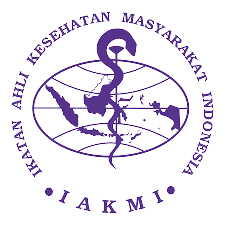EXPLORING THE KNOWLEDGE AND FEEDING PRACTICES OF STUNTING CHILDREN IN RURAL: A QUALITATIVE STUDY
Abstract
Keywords
Full Text:
PDFReferences
Kemenkes. Buku Saku Hasil Studi Status Gizi Indonesia (SSGI) Tahun 2022. Kemenkes RI. 2022;1-14.
Soliman A, De Sanctis V, Alaaraj N, Ahmed S, Alyafei F, Hamed N, et al. Early and long-term consequences of nutritional stunting: From childhood to adulthood. Acta Biomed. 2021;92(1):1-12.
Syam RC, Syafar M, Maidin MA, Rachmat M, Ismita UW, Yanti IH, et al. Reinforcers and inhibitors of family-based stunting children parenting (Case studies in slums area of makassar city). Open Access Maced J Med Sci. 2020;8(T2):131-5.
Novianti S, Nurjaman A. The Relationship Of Environmental Factors And A History Of Diarrhea To The Incidence Of Stunting In Baduta Aged 6-23 Months. Int J Heal Sci Med Res [Internet]. 2022 Aug 22;1(2):62-72. Available from: https://ejurnal.ung.ac.id/index.php/ihsmr/article/view/12764
Soviyati E, Sulaeman ES, Sugihardjo, Wiboworini B. Effect of Applying the Health Promotion Model in Stunting Prevention and Behavior Control in Indonesia. J Educ Heal Promot |. 2023;12:1-8.
Jalilah NH, Ariyanti R, Febrianti S. Factors Associated With Stunting Incidence In Toddlers In North Kalimantan. Jambura J Heal Sci Res [Internet]. 2022 Feb 26;4:106-12. Available from: https://ejurnal.ung.ac.id/index.php/jjhsr/article/view/12596
Wulandari, Rahayu F, Darwawansyah. Relationship of Sanitation and Infection to Stunting in North Bengkulu. Avicenna J. 2019;14(2).
Mardihani PW, Husain F. Pengetahuan Ibu Tentang Stunting pada Anak Balita di Wilayah Pesisir Desa Sekuro Kecamatan Mlonggo Kabupaten Jepara. JournalUnnesAcId. 2021;10(November):219-30.
Aprilina HD, Nurkhasanah S, Hisbulloh L. Mother's Nutritional Knowledge And Behavior to Stunting Prevalence Among Children Under Two Years Old: Case-Control. Bali Med J. 2021;10(3 Special Issue):1211-5.
Suryani D, Kusdalinah K, Krisnasary A, Simbolon D, Angraini W. Determinants of Feeding Patterns with Stunting in Children in the Coastal Area of Bengkulu City. Open Access Maced J Med Sci. 2022;10(E):1520-6.
Ilmani DA, Fikawati S. Nutrition Intake as a Risk Factor of Stunting in Children Aged 25-30 Months in Central Jakarta, Indonesia. J Gizi dan Pangan. 2023;18(2):117-26.
Krebs NF, Hambidge KM, Mazariegos M, Westcott J, Goco N, Wright LL, et al. Complementary Feeding: A Global Network Cluster Randomized Controlled Trial. BMC Pediatr. 2011;11.
Haileselassie M, Redae G, Berhe G, Henry CJ, Nickerson MT, Tyler B, et al. Why are Animal Source Foods Rarely Consumed by 6-23 Months Old Children In Rural Communities Of Northern Ethiopia? A Qualitative Study(PLoS ONE (2020) 15:1: (e0225707) DOI: 10.1371/journal.pone.0225707). PLoS One. 2020;15(3):1-21.
Munada MNS, Sunarya U, Walimah E. the Relationship Between Feeding Patterns in. 2023;2(1):41-5.
Natanagara IGCW, Putu Wiliska Wilasitha. Parenting Mothers With Stunting Toodlers at Banjangkaran II Community Health Center : A Qualitative study. Open Access Indones J Med Rev. 2022;2(4):249-54.
DOI: https://doi.org/10.37905/ijhsmr.v3i1.24259
Refbacks
- There are currently no refbacks.









